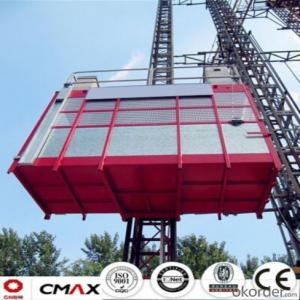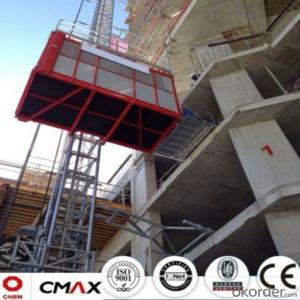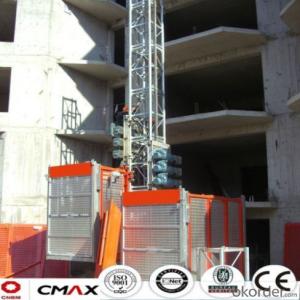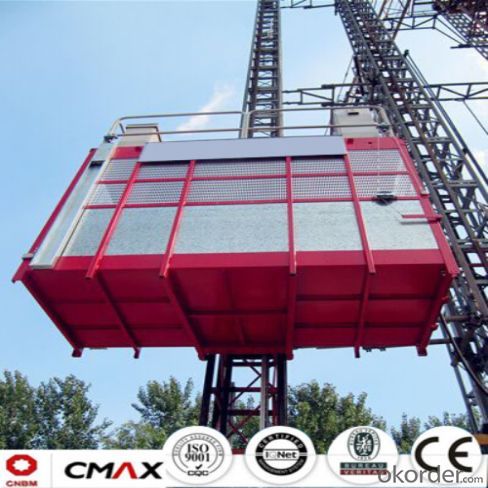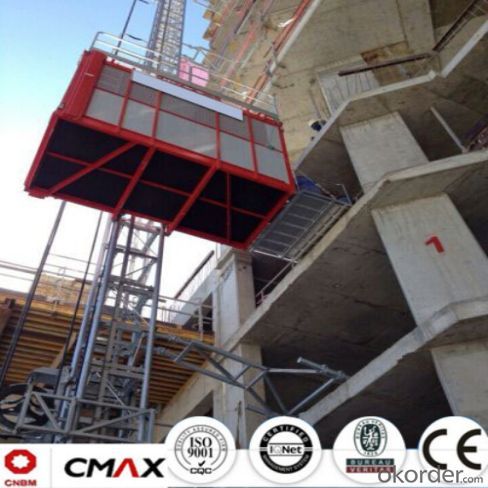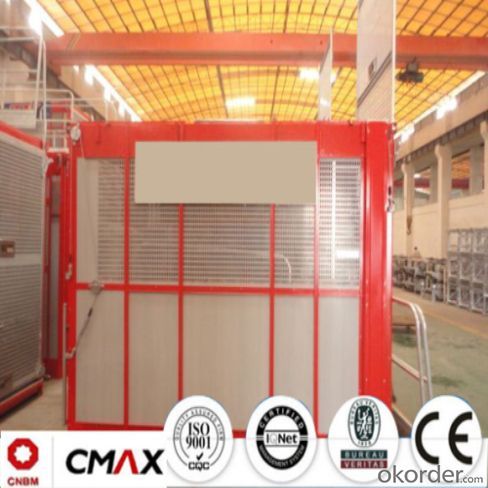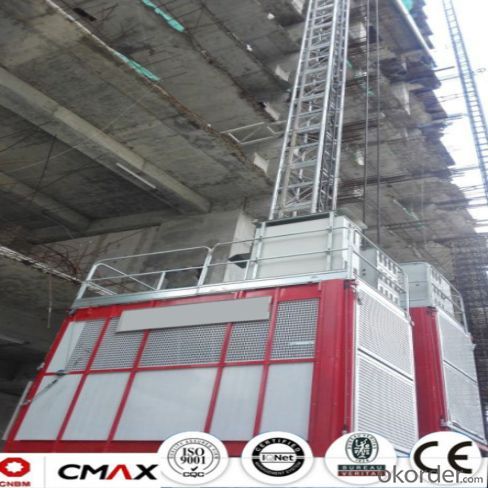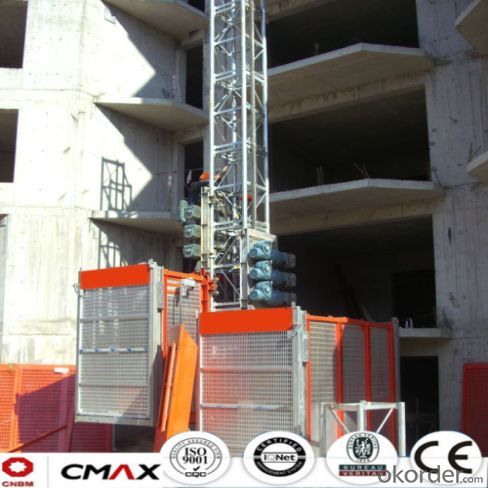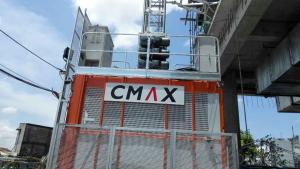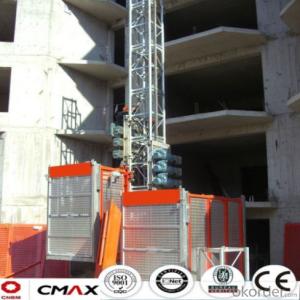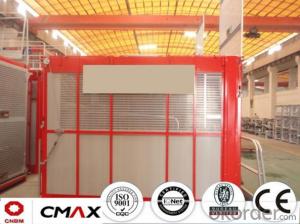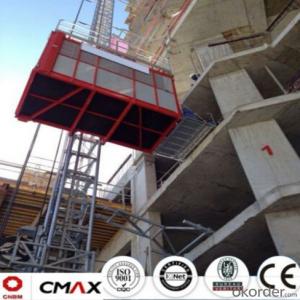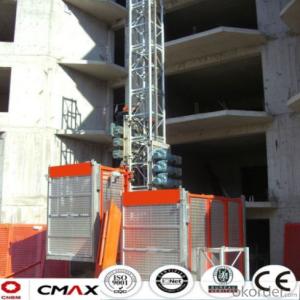Building Hoist With 2ton European Standard Electric Part
- Loading Port:
- China main port
- Payment Terms:
- TT OR LC
- Min Order Qty:
- 1 set
- Supply Capability:
- 10 set/month
OKorder Service Pledge
OKorder Financial Service
You Might Also Like
Specification
Structure of Building Hoist Description
1.The gearing select perfect bearing,strong cables and oil seal.
2.The electrical parts select products from famous world manufacturers for example Schneider,Siemens and LG.
3.The racks and pinion select advanced material and advanced technique,which enhance the life of all parts.
4.The steel structure adopted strong steel from famous native manufacturers.
Packaging & Delivery of Building Hoist
Packaging: nude and wooded box Delivery: 25-30days
Mains Parts of Building Hoist
1.The steel structure for example the mast, tie in and cabin ,could be all spay-painted and hot galvanized. Mast section is made with high quality Q345B which is the top standared in China.
2.Electrical parts are all adopted with Schneider , Siemens and other famous brands.
3.The electrical system can be selected with the normal control method and VVVF+PLC control way. Inverter we selected is from Schneider. Yaskawa or other world renowned brand.
4.Cabin exit door select ramping type. The ramping door looks like a bridge between the construction hoist and construction building.
5.The cabin floor is made from 3MM thickness steel riffled board(Hot dip galvanized), and 15MM thickness wooden board which can reduce the vibration and deformation a lot.
Building Hoist Images



Building Hoist Specification

FAQ of Building Hosit
Q: What is the building hoist main purpose?
A: Building hoist equipped with double or single cabin to transport the materials and labors up and down. It's the ideal construction equipment for vertical transportation in the field of construction.
Q: What is the main structure of building hoist?
A: The P/M construction hoist mainly contains metal structure, driving system, electrical control system, cable guide & protection system, electrical top crane and safety device.
Q: What is the meaning of the building hoist’s code?
A: Take SC200/200 for example: “SC” stands for rack and pinion hoist, “200/200” stands for double cage and capacity is 2 tons per cage. “SC200” stands for single cage and capacity is 2 tons.
- Q: Safe use of construction elevator
- In the case of passenger and carriage, the loading shall be uniformly distributed, and the overload shall be strictly prohibited. When the elevator runs to the top and lowest levels, it is strictly forbidden to stop at the collision or lower limit. 7. The driver for leaving hanging basket and while going off work, should be hanging basket fell to the ground, to cut off the total power supply, and the door is locked point, prevent other undocumented workers start the hoisting cage without authorization. Wind up above 6, should stop using the elevator and bring the cage down to the ground. There must be good protection on both sides of the transportation channel. Floor door should be in a normally closed state, its height should conform to the requirements of the specification, anyone shall not open or head out of the door, when the floor door open, the driver shall not start the elevator. Ensure that the communication device is in good condition and the driver should be able to start the lift after confirming the signal. The driver should immediately execute any emergency stop signal on the floor of the operation. The elevator should be installed on a separate ground protection and lightning protection device. It is strictly forbidden to do maintenance work under the condition of the elevator. If maintenance is required, the power supply must be cut off and the sign of "check in, shut off" will be hung in a prominent place.
- Q: Is it possible to utilize a building hoist for the purpose of lifting large vehicles?
- <p>Yes, a building hoist can be used to lift large vehicles, but it requires a hoist specifically designed and rated for such heavy loads. It's crucial to ensure that the hoist has the necessary capacity and safety features to handle the weight of the vehicle. Additionally, the operation must be conducted by trained professionals following strict safety protocols to prevent accidents. It's also important to check local regulations and guidelines for lifting operations involving heavy machinery or vehicles.</p>
- Q: This question asks for the method to determine the maximum load that a single-rope lift can handle.
- <p>To calculate the load capacity of a single-rope lift, you need to consider several factors including the strength of the rope, the diameter of the rope, the angle of the lift, and the safety factor. The basic formula involves determining the maximum load the rope can bear based on its material properties and construction, which is then adjusted by the safety factor to account for dynamic loads and potential wear. The formula might look something like this: Load Capacity = (Tensile Strength of Rope 脳 Area of Rope Cross-Section 脳 Safety Factor) / (Cosine of Angle of Incline). It's important to consult with engineering standards and the lift manufacturer's specifications for precise calculations.</p>
- Q: This question asks for the safety precautions that should be taken when operating electric-hydraulic construction hoists.
- <p>Safety measures for using electric-hydraulic building hoists include regular maintenance and inspection to ensure all components are in good working order. Operators must be trained and certified, following all safety protocols. Never exceed the hoist's load capacity. Ensure that safety hooks and chains are in place and secure. Keep the hoist area clear of debris and unauthorized personnel. Use proper lifting techniques and avoid sudden starts or stops. Always inspect the load before lifting to ensure it is stable and secure. Emergency stop switches should be easily accessible. Ensure that all safety guards are in place and functioning properly. Adhere to all local regulations and manufacturer's guidelines.</p>
- Q: Is it possible for a hydraulic cylinder in a building hoist to be serviced or replaced by individuals other than the manufacturer?
- <p>Yes, a hydraulic cylinder in a building hoist can be repaired or replaced by qualified individuals or companies other than the manufacturer. However, it is crucial to ensure that the service provider has the necessary expertise and follows the manufacturer's specifications to maintain safety and performance standards. Using non-genuine parts or improper installation can lead to safety hazards and void warranties. It is always recommended to consult with professionals who are familiar with the specific hoist model and have experience in hydraulic systems repair and maintenance.</p>
- Q: What types of materials can be transported using a building hoist?
- <p>A building hoist can lift a variety of materials, including construction supplies such as bricks, cement, sand, and gravel. It can also transport larger items like steel beams, prefabricated concrete elements, and heavy machinery. Additionally, it is used to move tools, equipment, and sometimes personnel within the construction site. The specific materials that can be lifted depend on the hoist's capacity and the safety regulations in place. It's crucial to ensure that the load does not exceed the hoist's weight limit to maintain safety standards.</p>
- Q: Whether the construction elevator is a dual-purpose elevator
- The construction elevator is being operated on; And a person's elevator is automatically controlled; The construction elevator is directed by the rack, which is seen in the rack, and the noise is large. The escalator is not a rack, it is usually guided, and the rails are invisible. Construction elevators are rudimentary; And the elevator is complicated.
- Q: The tower crane is on a surface with the construction elevator, and only 2 or 3 meters away. Is that allowed
- Cranes and elevators from very close, may be the reason for the sites or the position is not reasonable, so close to the distance as long as you ensure the tower crane and tower crane arm when rotating to the above the elevator after satisfying the end, must keep more than 2 meters with elevator recent distance. Or you can refer directly to the tower crane safety code, GB5144-2006.
- Q: This question is asking for a comparison between electric and hydraulic building hoists, focusing on their differences.
- <p>Electric and hydraulic building hoists differ primarily in their power source and operational mechanisms. Electric hoists use electric motors to lift and lower loads, which makes them more energy-efficient and quieter in operation. They also tend to have fewer maintenance requirements and are often easier to control with precise movements. Hydraulic hoists, on the other hand, use hydraulic pressure to move loads and are known for their ability to lift heavy loads with less effort. They are often preferred for applications requiring high lifting capacities and can be more compact. However, hydraulic hoists may require more maintenance due to the presence of seals and fluid systems, and they can be noisier than electric hoists.</p>
- Q: This question asks if building hoists can be utilized in both commercial and residential structures.
- <p>Yes, building hoists can be used for both commercial and residential buildings. They are essential in construction projects to efficiently transport materials and personnel vertically within the building structure. In commercial buildings, they aid in the construction of offices, retail spaces, and other similar structures. In residential buildings, they are used for constructing apartments, condominiums, and single-family homes. The choice of hoist type and capacity depends on the specific requirements of the project, such as the height of the building, the weight of materials to be transported, and the number of workers needing to be moved.</p>
Send your message to us
Building Hoist With 2ton European Standard Electric Part
- Loading Port:
- China main port
- Payment Terms:
- TT OR LC
- Min Order Qty:
- 1 set
- Supply Capability:
- 10 set/month
OKorder Service Pledge
OKorder Financial Service
Similar products
Hot products
Hot Searches
Related keywords
